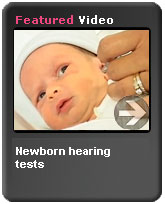Baby
Concerns
Baby & SOLID FOOD
If your baby is ready for solids, most of the following
conditions should apply.
Baby..
Controls her neck, Sits up with support, Has doubled
her birth weight, Indicates when she is full by
turning her head or refusing to open her mouth Shows
interest in the food you eat Reaches out for objects
by leaning toward something Seems hungry for more
food Is able to move her tongue back and forth These
skills are usually not achieved until baby is between
4-6 months of age. Don't introduce solids in the
hope of making baby sleep through the night. By
making baby eat solids before she is ready, you
will be creating problems instead. Baby's digestive
system isn't ready for solid food when she is very
little. Certain digestive enzymes which help baby
gain nutritive value from the food she eats only
develop after baby turns nine months old.
SHAKEN Baby SYNDROME
This can cause serious physical
and mental harm to baby. 'A good shake' as a means
of discipline to baby is resorted to by some parents
in place of hitting. This is dangerous as it can
be fatal. The problem usually occurs when a baby
cries persistently and out of frustration the caregiver
shakes the baby to quieten her. All it takes is
less than 20 seconds, and a baby may be shaken upto
50 times, enough to cause serious harm or even kill
her. Shaken baby syndrome is particularly dangerous
because their neurological systems are still developing.
Symptoms a baby has been shaken violently include:
• Brain damage
• Seizures
• Blindness
• Problems with speech
• Bruising
• Any signs of abuse
Never shake a baby for any reason. All babies cry,
some more than others. If you don't think you can
deal with a crying baby, ask for help. Don't let
your emotions get out of control. It is ok to play
with your baby, just avoid playing too rough.
 Baby in PAIN
Baby in PAIN
You may have wondered how you will know if your baby
is in pain. Unfortunately there is no single sign
or symptom to indicate when infant is in pain. Different
babies express pain differently. The following indicate
a baby might be in pain:
• Crying for long periods
• Cannot be comforted
• Pulling away when you touch a part of his
body
• Swelling, redness or misshapen on body
• Pulling, rubbing or scratching part of the
body
• Changes in sleeping pattern
• Changes in eating
• Changes in the way he moves or how much he
moves
• After a long bout of crying, baby becomes
still and may even stop crying